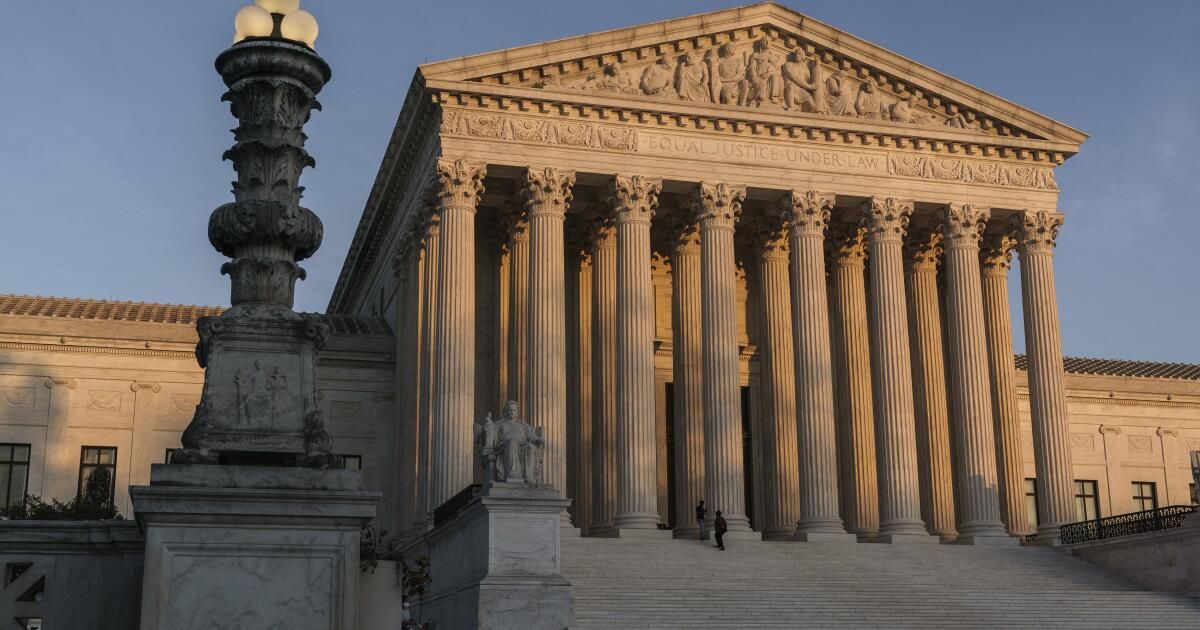The well-documented ethical failures of Justices Samuel A. Alito Jr. and Clarence Thomas are all the more troubling because the Supreme Court has become seriously disconnected from democratic accountability.
Justices nominated by Republican presidents have made up the majority of the court for more than 50 years, dating back to 1970, when Justice Harry Blackmun was nominated and confirmed in the Nixon administration. Although Democrats won the presidency in five of the last eight elections, the judges nominated by Democratic presidents during this period never constituted a majority.
One way to assess whether the court's justices have been reasonably representative of the will of the American people is to compare the court's historical representation with what it would have been if the justices had been appointed at regular intervals rather than at the whim of the court. decision, often political, of each judge. backing out.
What would the composition of the court be like if, for example, presidents could appoint a new justice every two years, at the beginning of each new congressional term? A system of appointments every two years (let's call it the “regular presidential appointment process”) is the central feature of a bipartisan proposal limit the terms of judges to 18 years.
If past presidents had been able to appoint a justice every two years, Democratic-nominated justices would have held the majority of Supreme Court seats nearly a third of the time over the past 50 years, instead of never.
A combination of three dynamics (strategic retirements of Republican-nominated judges, non-strategic failures of Democratic-nominated judges in retirement, and Senate machinations) has resulted in an average of 1.3 more Republican-nominated judges in the Senate. presidents nominate judges every two years.
It is surprising to note that under a regular appointment system, Democratic-nominated judges would currently have a 6-3 majority on the court, rather than having a 3-6 minority position.
If Biden wins re-election in 2024 and the lineup of judges remains the same, the court's problem of democratic disengagement will reach an all-time high: the Democratic Party will control the presidency in seven of the last nine Congresses, but will only hold three of the nine . court seats.
Of course, the judges don't always act in ways that their nominated presidents would support. Some Republican-appointed judges, such as Justice William J. Brennan Jr., were notoriously liberal; Other Democratic appointees, such as Judge Byron White, sometimes wrote deeply conservative opinions.
Still, our confidence in the court depends largely on it being democratically accountable. If a political party repeatedly wins the presidency and, to a lesser extent, controls the Senate, that party's judicial opinions should be reflected on the court. Otherwise, we will find ourselves where we are now: Last fall, less than half of the population had “a lot” or “a lot” of confidence in the Supreme Court, according to Gallup. In February, a Marquette University Law School poll found that 60% of Americans disapprove of the job the court is doing.
The January 6 assault on the US Capitol, with its attempt to stop the transfer of power from Republican President Trump to Democratic President Biden, can be seen as an attempt to isolate the executive branch from democratic control. That goal has largely been achieved, more or less quietly, as far as the judiciary is concerned.
How entrenched is the current Republican-appointed majority? Kart Kandula, a Yale Law student, and I ran a simulation in which we assumed actuarial death risk and historical levels of strategic retirements and found that a Republican-nominated majority is likely to last. far in the future. Even if Democrats could somehow succeed in the Herculean task of winning five of the next seven presidential elections, we should expect to live under a Supreme Court with a continued Republican-nominated majority.
Recognizing the importance of a democratically accountable Supreme Court suggests a path to reform the appointment process. Instead of, or in addition to, term limits for judges, Congress could require that the court's composition align with partisan control of the presidency for, say, the last nine congressional terms. If Republican presidents have served in five of the last nine Congresses, then only the five most recently appointed judges nominated by Republican presidents should be called to hear cases, and the remaining four seats would be filled by the most recent Democratic appointees. If there are not enough Republican-nominated judges available, the statute could require that Republican-nominated lower court judges be randomly selected to serve by appointment.
A follow-up requirement would go a long way toward solving the problem of a recalcitrant Senate that refuses to consider a sitting president's nominees (as happened when President Obama nominated Merrick Garland to the court, only for then-Senate Majority Leader Mitch McConnell to refuse to consider the nomination) and would ensure continued representativeness if a premature death or recusal threatened to skew the court's composition.
A Republican-nominated majority has persisted on the Supreme Court for more than 50 years, despite the Democratic Party's substantial successes in winning the presidency. Without some change in the way judges are appointed or appointed, many of us will never live to see a court that better reflects the political will of the people.
Ian Ayres is a professor at Yale Law School.











